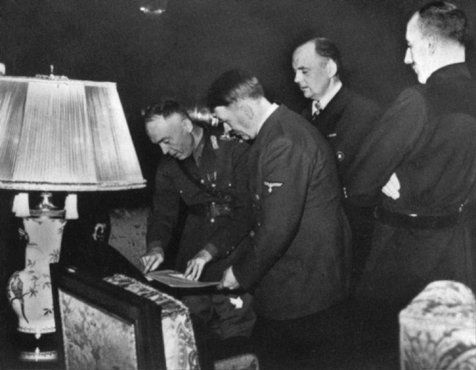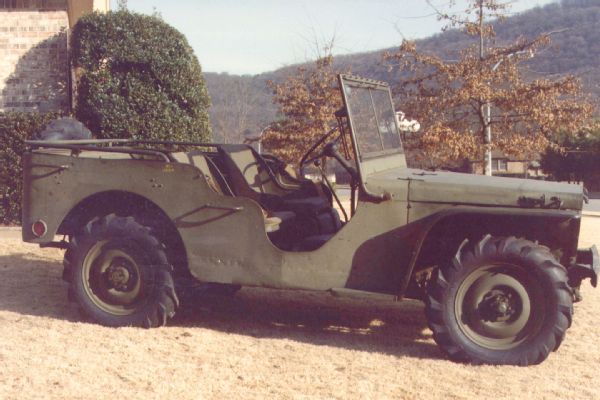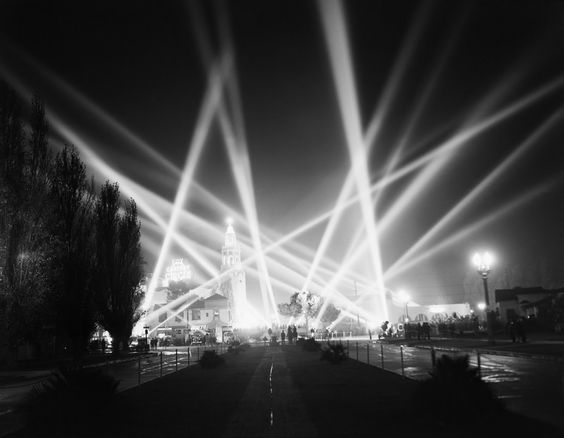Saturday 23 November 1940
 |
| Romanian ruler Ion Antonescu rather casually reviews the Tripartite Agreement in Berlin, Germany. Adolf Hitler and German Foreign Minister Joachim Ribbentrop look on. November 23, 1940. |
Greek I and II Corps complete the removal of the remaining troops from Greek territory today. The Greek K Group on the Korçë plateau continue moving forward in an effort to capture the entire plateau, which opens the way to central Albania via the valley of the Devoll River. However, the main axis of advance now begins to shift from this area to the left flank, where the important Italian supply port of Valona appears vulnerable. The Greeks conduct some small amphibious landings behind the Italians which add to their confusion. The Italians in that sector retreat in a disorganized fashion, losing equipment.
The Greek Liuba Detachment captures Megali Rahi in the Thesprotia sector, and the Greek 2nd Infantry Division reaches the Albanian border in the Negrades sector.
 |
| Wing Commander Guy Penrose Gibson, VC, DSO & Bar, DFC & Bar, marries his bride Eve today. November 23, 1940 |
RAF Bomber Command raids railway installations in Berlin, Dortmund and Leipzig, the inland port at Duisburg-Ruhrort, canal installations at Cologne, the Krupp factory at Essen, oil installations at Dortmund and Wanne Eickel, and various Luftwaffe airfields in northwest Europe. Coastal Command chips in with attacks on seaplane bases.
The RAF also raids Turin in northern Italy, apparently involving planes from Malta. Nine Wellington bombers arrive in Malta today, so possibly it is a shuttle raid from England. The RAF is quite tight-lipped about the use of Malta for offensive operations, not wishing it to rise on the Axis priority list.
RMS Llandovery Castle (10,640 tons) is being converted to become a hospital ship - like her namesake who featured in a notorious incident during World War I - in Southampton Harbor. During the fierce Luftwaffe attacks during the day, the Llandovery Castle is badly damaged. Also damaged is 302-ton freighter Duchess of Cornwall, which is tied up at Royal Pier. The latter ships are rejected for service as minesweepers due to her bomb damage. (Some accounts place the Llandovery Castle incident on the 24th).
The Luftwaffe attack on Southampton also sinks 38-ton tug Bonaparte, near Northam Bridge.
While there no wolfpacks in operation, two separate U-boat attacks net a total of eleven Allied ships.
U-123 (Kptlt. Karl-Heinz Moehle) continues its successful second patrol out of Lorient. She is in the shipping lanes west of Ireland and sinks four ships of Convoy OB 244 in quick succession. Convoy OB-244 already has lost two ships to Viktor Schütze's U-103 on 21 November, and today's losses make the grand total of losses for that convoy six ships of 31,738 tons.
U-123, however, is itself seriously damaged during the attack by hitting something - possibly one of the ships that it had sunk, as a common (and risky) tactic to avoid detection by escorts is to sail under torpedoed ships - and needs to return to Lorient after this.
U-123 torpedoes and badly damages 5135-ton Swedish freighter Anten. There are 32 survivors and one death. The ship remains afloat until the 25th, an obstruction in the sea lanes, at which point it sinks. This may be the ship that U-123 hits, as the U-boat may be trying to hide near it.
U-123 also torpedoes and sinks 5228-ton British freighter Tymeric. There are 5 survivors and 71 deaths.
U-123 also torpedoes and sinks 5115-ton British freighter King Idwal. There are 28 survivors and 12 deaths.
U-123 also torpedoes and sinks 5407-ton British freighter Oakcrest. There are 6 survivors and 35 deaths.
Greek 2219-ton grain freighter Kolchis, sailing in Convoy SC 13, sinks for unknown reasons. All 23 crew perish, thus giving rise to the mystery of its loss. There is speculation that it was another of U-123's victims, but most believe that it simply sank due to bad weather.
Separately, U-100 (Kptlt. Joachim Schepke) is on its fourth patrol. It has been shadowing Convoy SC-11 about 310 km north of Ireland. It finally today gets into a position to attack just after midnight. In a wild night of action, Schepke sinks an incredible six ships and then, after continuing to shadow the convoy throughout the day, adds a seventh victim around 21:00.
The seven ships sunk by Schepke today:
- 4562-ton British freighter Justitia (13 dead 26 rescued)
- 4740-ton British freighter Bradfyne (39 dead 4 rescued)
- 3628-ton Dutch freighter Ootmarsum (all 25 perish)
- 2205-ton Norwegian freighter Bruse (16 dead 6 rescued, it is a ship full of lumber so does not sink; towed to port, then scrapped)
- 2694 ton Norwegian freighter Salonica (9 dead 25 rescued)
- 3136-ton British grain freighter Leise Mærsk (17 dead 7 rescued)
- 3636-ton Dutch freighter Bussum (all 29 survive).
Elsewhere, 46 ton Royal Navy patrol trawler HMT Good Design hits a mine off Inchkeith and breaks in two. Four men survive, two perish. The two halves are later salvaged and towed to Granton.
British 245 ton drifter New Comet hits a mine off the mouth of the Tyne and is close enough to shore for the crew to beach it. The ship is later refloated and returned to service.
British 41 ton drifter Sailor King hits a mine and sinks off Brightlingsea, Essex in the North Sea.
British 310 ton collier Thomas M hits a mine and sinks off Lowestoft. There are two deaths.
US 73 ton tug Mary Arnold is towing the 117-ton dredge Progress at the eastern end of Long Island Sound when both ships sink. It is unclear what happened, perhaps a weather-related event.
Convoy OB 248 departs from Liverpool, Convoy FS 343 departs from Methil, a Greek convoy departs from Candia for Piraeus, Convoy BN 9A departs from Aden.
U-70 (Kapitänleutnant Joachim Matz) is commissioned.
 |
| Swing dancers. 23 November 1940. |
At Malta, the Italians stage two major air raids on the island's RAF airfields. During the morning, five Italian bombers attack the new RAF field at Ta Qali. The second raid, in the afternoon, hits Luqa airfield and the nearby Marsa area.
RAF Air Vice-Marshal John H. D'Albiac is in command of strong forces in Greece now. His mission, for the time being, is to protect Greece from Italian air attacks.
Battle of the Pacific: Cruiser USS Augusta departs from Honolulu to scout in the northern Hawaiian chain of islands (which extends all the way to Midway) due to reports of Japanese activity in the area. Commander in Chief, Asiatic Fleet Admiral Thomas C. Hart remains at Pearl Harbor and shifts his flag to the USS Houston.
 |
| Marshal Antonescu signs the Tripartite Agreement. |
US/Vichy French Relations: The US State Department, perhaps displeased with the negative outcome of its attempt to obtain the French battleships based in North Africa, replaces ambassador William Bullitt with Admiral William Leahy.
Anglo/US Relations: British Ambassador Lord Lothian returns to New York from a spell in London. At a press conference, he warns the US government that Great Britain's gold and dollar reserves are not limitless and that the UK may require some kind of financial assistance as soon as the coming year. So far, US assistance to Great Britain has been on a "cash and carry" basis, but that cannot last forever because wars are expensive, and even England's bank accounts are not limitless.
It is not so much what Lord Lothian has to say, but how he says it, that makes news. Not always the most tactful fellow, Lord Lothian simply tells the assembled journalists: "Well, boys, Britain's broke; it's your money we want." This causes turmoil in the financial markets (the pound sterling drops), and the remark is trumpeted by the Reich media. However, what he says essentially is accurate, and getting it out in the open may create some short-term headaches, but it also "clears the air" and sets in motion serious planning in Washington for how to carry England financially for the remainder of the war.
Separately, President Roosevelt cables British Prime Minister Winston Churchill about the unsuccessful negotiations for the French battleships which Petain refuses to sell to the US.
British Military: Churchill confers with the First Lord of the Admiralty and the First Sea Lord. They reach a decision to maintain a strictly defensive posture in Singapore and Hong Kong.
China: The Japanese 11th Army is organized into five groups. Lieutenant General Waichiro Sonobe commands. The intention is to attack Hubei Province.
Dutch Homeland: The German authorities order all Jewish professors and civil servants to be fired.
 |
| "Life of an East End Parson." A Priest is followed by children in the East End London slums. November 23, 1940. Photo by Bert Hardy |
November 1940
November 1, 1940: Hitler Irate
November 2, 1940: U-31 Sunk - Again
November 3, 1940: Kretschmer's Master Class
November 4, 1940: Spain Absorbs Tangier
November 5, 1940: Jervis Bay Meets Admiral Scheer
November 6, 1940: San Demetrio Incident
November 7, 1940: Galloping Gertie
November 8, 1940: Italian Shakeup in Greece
November 9, 1940: Dutch Fascists March
November 10, 1940: Fala and Doc Strange
November 11, 1940: Taranto Raid
November 12, 1940: Molotov Takes Berlin
November 13, 1940: Molotov Foils Hitler
November 14, 1940: Moonlight Sonata
November 15, 1940: Warsaw Ghetto Sealed
November 16, 1940: France Keeps Battleships
November 17, 1940: Malta Hurricane Disaster
November 18, 1940: Hitler Berates Ciano
November 19, 1940: Birmingham Devastated
November 20, 1940: Hungary Joins Axis
November 21, 1940: Dies White Paper
November 22, 1940: Italians Take Korçë
November 23, 1940: U-Boat Bonanza!
November 24, 1940: Slovakia Joins In
November 25, 1940: Molotov's Demands
November 26, 1940: Bananas Be Gone
November 27, 1940: Cape Spartivento Battle
November 28, 1940: Wick Perishes
November 29, 1940: Trouble in Indochina
November 30, 1940: Lucy and Desi Marry
2020






